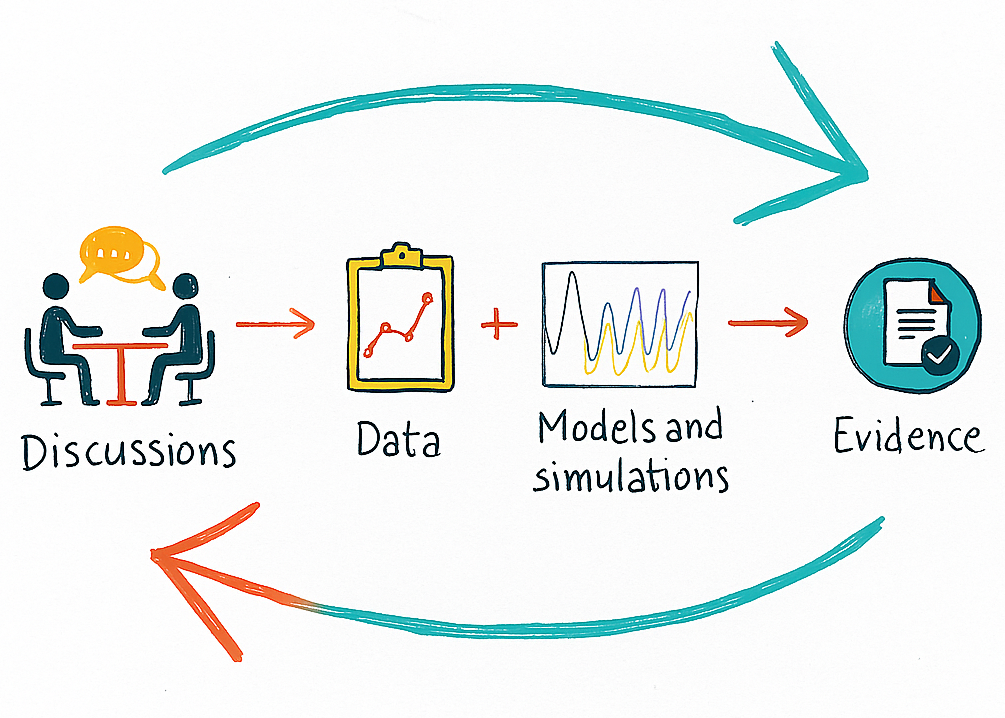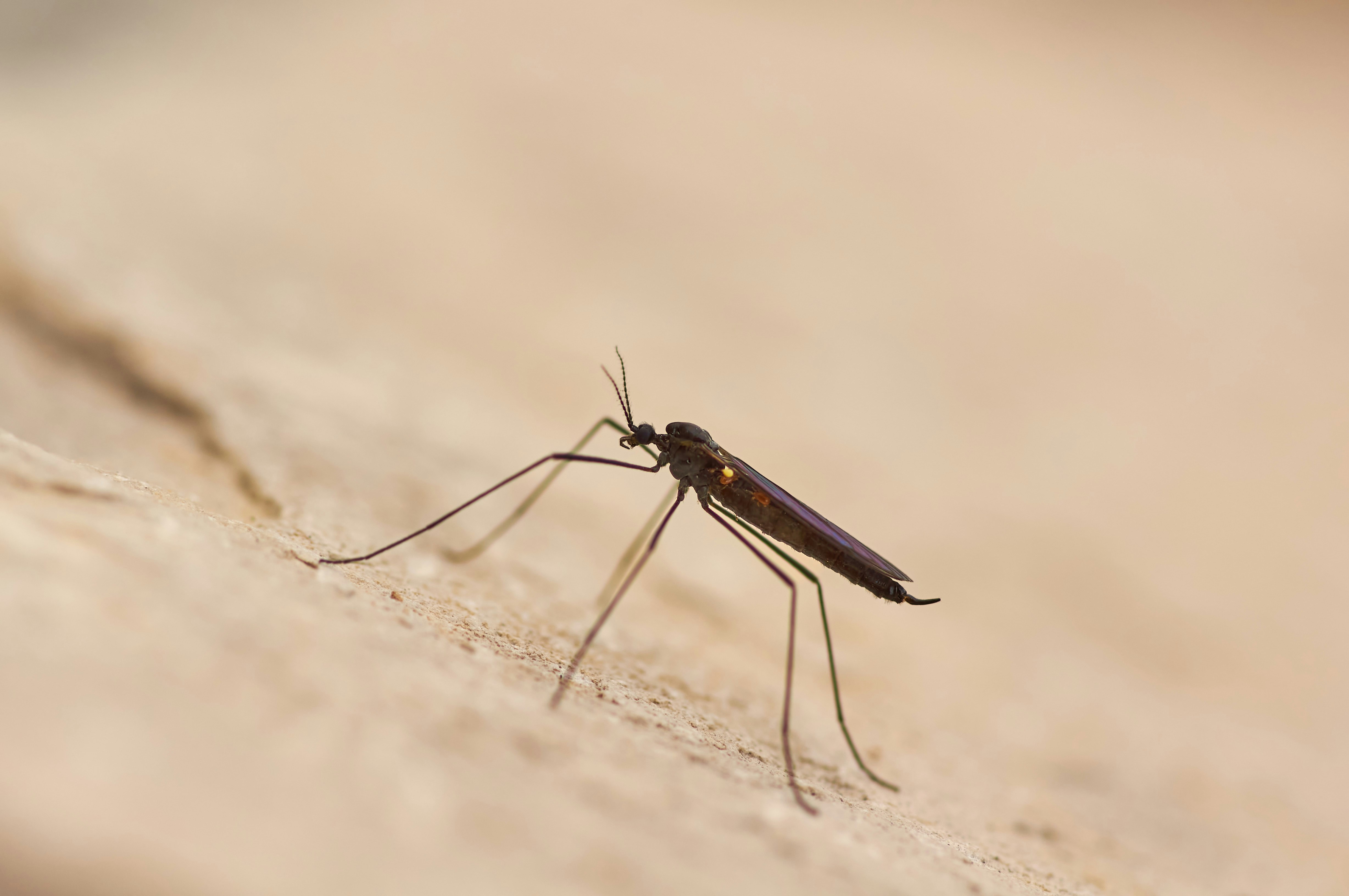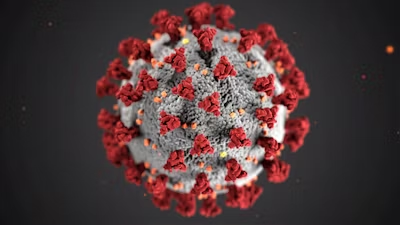The GDM team uses advanced modelling techniques combined with an open communication approach to generate evidence to support global health decisions, communicated through direct stakeholder engagement in working policy groups, funders, and government departments.
What We Do

We conduct research on and provide reliable and transparent mathematical modelling to support complex questions on malaria dynamics, novel tools, and implementation decisions for interventions to prevent and treat malaria in Africa, and across the globe. By engaging directly with stakeholders including funders, intergovernmental organizations and product developers, our methods and approach combine to increase confidence in health research adoption of mathematical modelling to find the best treatments, both in terms of health and economics, for malaria and other infectious diseases.
Step 1
We use High Performance Computing to run simulations that can model infectious disease at an individual and population level. This is crucial for us to explore a wide range of health, environmental and geographical settings that could affect how someone comes to be in contact with an infectious agent and falls sick, how sick they become, how they recover and might infect others along the way; as well as the impact of interventions and preventative measures. These findings are calibrated with real-life data (e.g. from clinical trials) to produce the most transparent and reliable scenarios for the outcomes to infectious diseases and their interventions.
Step 2
Our modelling evidence is communicated directly to influence policy and investment decisions on malaria eradication and elimination, product development and use.
Step 3
Our findings and high-level engagement with stakeholders means we participate in the subsequent activity cycle of consultation and task setting, incorporating learnings from outcomes from Step 1 and 2. In this way, we refine our research methods, leverage maximum impact in our findings, and sit at the table to develop the next set of questions that are testable and actionable for maximal public and health economic benefit.
Active Projects

OpenMalaria
August 2025 NEWS: OpenMalaria v48.0 has been released!
You can download it here https://github.com/SwissTPH/openmalaria/releases/tag/schema-48.0
Three updates to functionality include
1. Elimination model updates
2. Heterogenous intervention coverage
3. Simplification for XML specification: you now don’t need to specify base model parameters, you can use a simplified XML structure with model name.
Please check out the wiki: https://github.com/SwissTPH/openmalaria/wiki
Core to our modelling work is the development and use of an individual-based model of malaria transmission dynamics known as OpenMalaria . This model is an open-source tool for simulating the dynamics of malaria transmission and epidemiology, and the impact of interventions on health and economic outcomes. The open source code and details of our model OpenMalaria can be found here https://github.com/SwissTPH/openmalaria.
The model can simulate malaria in village- or district-size human populations, and has been used to address questions on disease dynamics and the use of interventions. Developed and maintained in partnership between the Global Disease Modelling team at The Kids Research Institute Australia and the Disease Modelling Unit of Swiss TPH, our OpenMalaria model is used by a wide range of modellers worldwide.
This collaboration with the Gates Foundation supports the improvement and maintenance of OpenMalaria as well as the development of new mathematical malaria models to support decision making.
Past Projects

Using model-based evidence to optimise medical intervention profiles and disease management strategies for COVID-19 control
During the COVID-19 pandemic, governments imposed varying social-distance measures. From 2021, vaccines were developed to reduce infection incidence and associated disease burden of coronavirus infectious disease (COVID- 19). Guidance was needed to design optimal profiles of medical interventions and deployment schedules of control strategies to suppress transmission and avert mortality, especially in the face of new variants of concern which may evade immunity (from natural infections or vaccines). Our team was a lead for the development of mathematical models of SARS-CoV-2 transmission dynamics. This work produced estimates of the quantitative impact of interventions from available evidence on disease progression, transmission, host immunity, and health system interactions during the COVID-19 pandemic, particularly in Switzerland.
Here, we developed and operationalized a model-based decision framework to inform the optimal properties of therapeutic and delivery strategies of new tools to achieve prevention and control of COVID-19 at the population and individual level. Specifically, our team developed a new individual-based mathematical model of SARS-CoV-2 dynamics, OpenCOVID, to assess the impact of a range of prevention measures, vaccines, and medical interventions to improve the response and minimise cases, hospitalisations, and deaths in Switzerland and abroad. Our model OpenCOVID was applied to support Swiss decision-making on vaccine rollouts and measures, as well as to predict the public health impact of new emerging SARS-Cov-2 variants of concern.
Specifically, we:
1. quantitatively investigated and optimized diagnostics and testing/response strategies as well as new treatments including small molecule therapeutics, biologics, vaccines, and immune-enhancement technologies; and
2. estimated and compared individual and population health consequences of alternative diagnostics, and pharmaceutical strategies.
Our model continues to be used to inform future strategies for ongoing vaccination and response efforts and to support plans for managing health and economic effects of such future health emergencies.